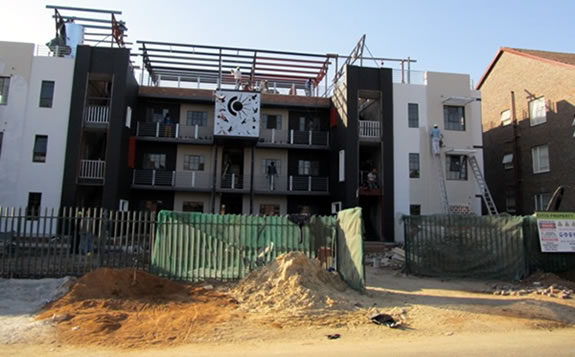Alternatively Built M-F Development Uses Upcycling as a Hook
A new trend of alternative building for multi-family developments is on the rise. This trend uses upcycling, or the conversion of waste products into new uses.
By Alex Girda, Associate Editor
South Africa is the latest country to embrace the emerging trend of alternative building for multi-family developments. As previously reported on CPE and MHN’s City Pages, San Francisco has seen the development of a smaller, pre-fabricated apartment building providing quick solutions for multi-family infill projects. Citiq Property Developers has taken another path to alternative development, using shipping containers in the process, while not jeopardizing the overall quality of the building.
The company recently announced that its newly finished apartment block in the South African city of Johannesburg, SixtyOne on Countesses, was completed in record time. The shipping container technology has been used before for portable retail areas in festivals and smaller bars, but its practicality for development in general might have been underrated. The original purpose of shipping containers is durability. The use of still seaworthy units guarantees that the alloys they are made from will hold on for a great amount of time. This process is known as upcycling, which is essentially the conversion of waste materials or currently useless products into new products for better quality or better environmental value.
The actual construction uses re-purposed shipping containers as an integral part of the design, without taking away from the structure’s aesthetics. The building’s look is provided by Michael Hart Architects, winner of a 2010 contest that challenged architects to provide designs for an affordable, safe and visually satisfying building using the proposed container construction method. The plans were chosen over six other proposals submitted that year, and the development received city council approvals the following year.
Floor plans will include two- and three-bedroom apartments that vary in size between 516 and 753 square feet. The “container-housing” branding is provided by the fact that the wide living space is provided by two containers spanning almost 16 feet, while the doors will be used to create the balconies. According to the managing director of Citiq Property Development, the design is a door opener for other projects in the country because “the high density potential of container apartments makes them ideally suited to providing accommodation within city limits, enabling people to live within easy proximity to their places of work.”








You must be logged in to post a comment.